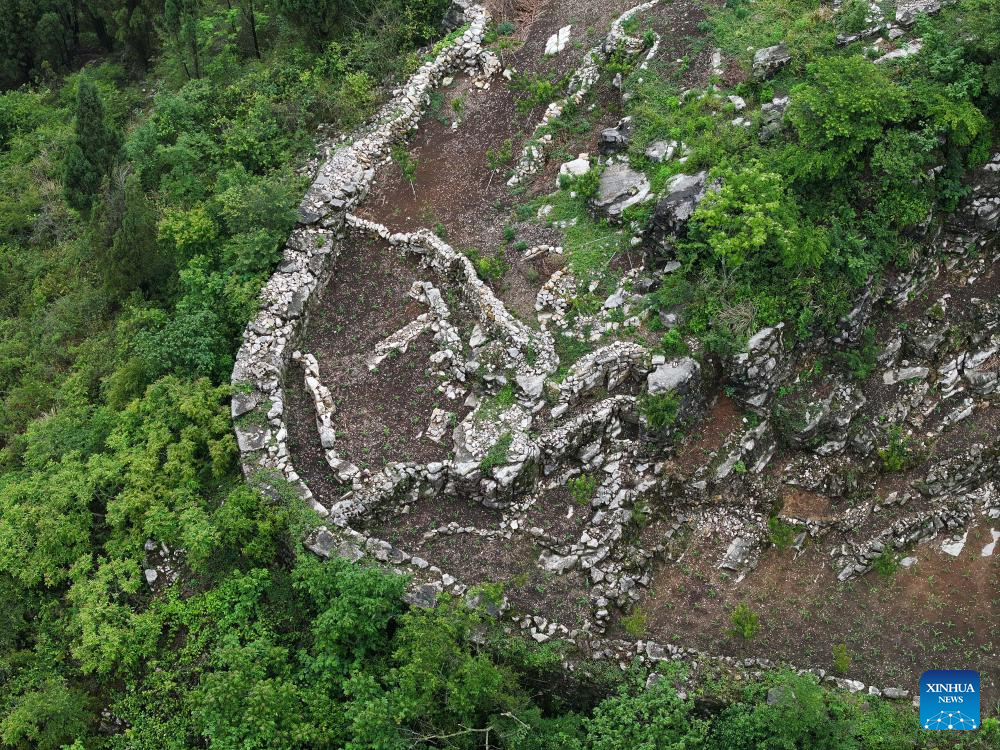
An aerial drone photo taken on May 17, 2024 shows a view of an ancient city ruins dating back to the Ming Dynasty (1368-1644) at Pingzhai Village of Bouyei-Miao Autonomous Prefecture of Qianxinan, southwest China's Guizhou Province. The site appears oval-shaped when viewed from above, covering an area of about 18,000 square meters, with more than 900 meters of stone walls remained. (Xinhua/Liu Xu)
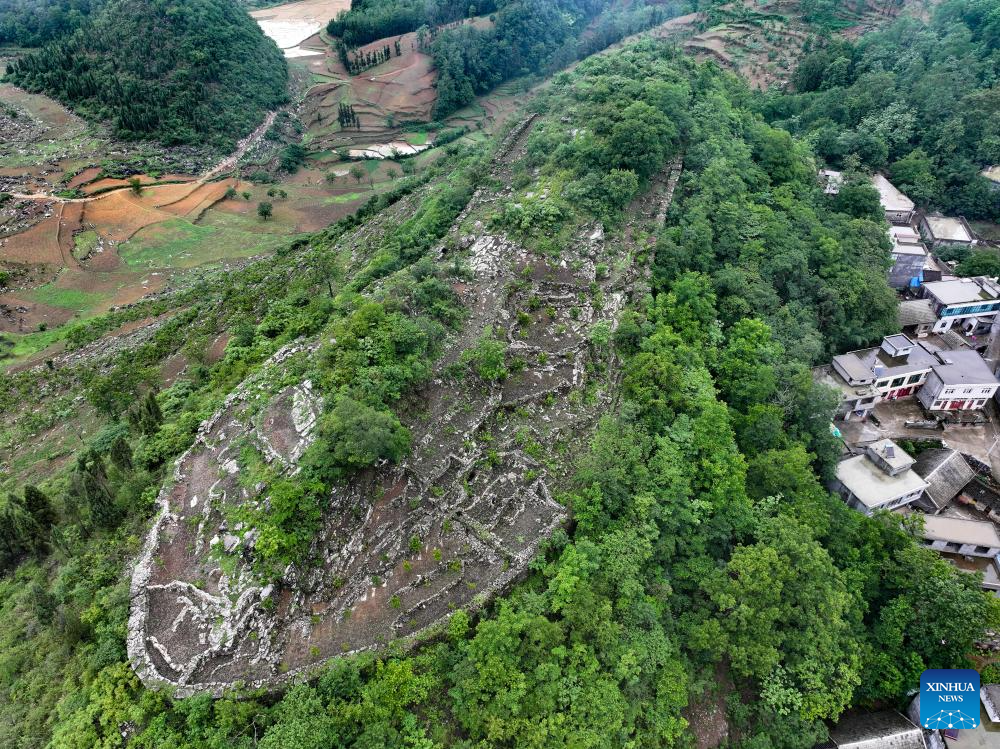
An aerial drone photo taken on May 17, 2024 shows a view of an ancient city ruins dating back to the Ming Dynasty (1368-1644) at Pingzhai Village of Bouyei-Miao Autonomous Prefecture of Qianxinan, southwest China's Guizhou Province. The site appears oval-shaped when viewed from above, covering an area of about 18,000 square meters, with more than 900 meters of stone walls remained. (Xinhua/Liu Xu)
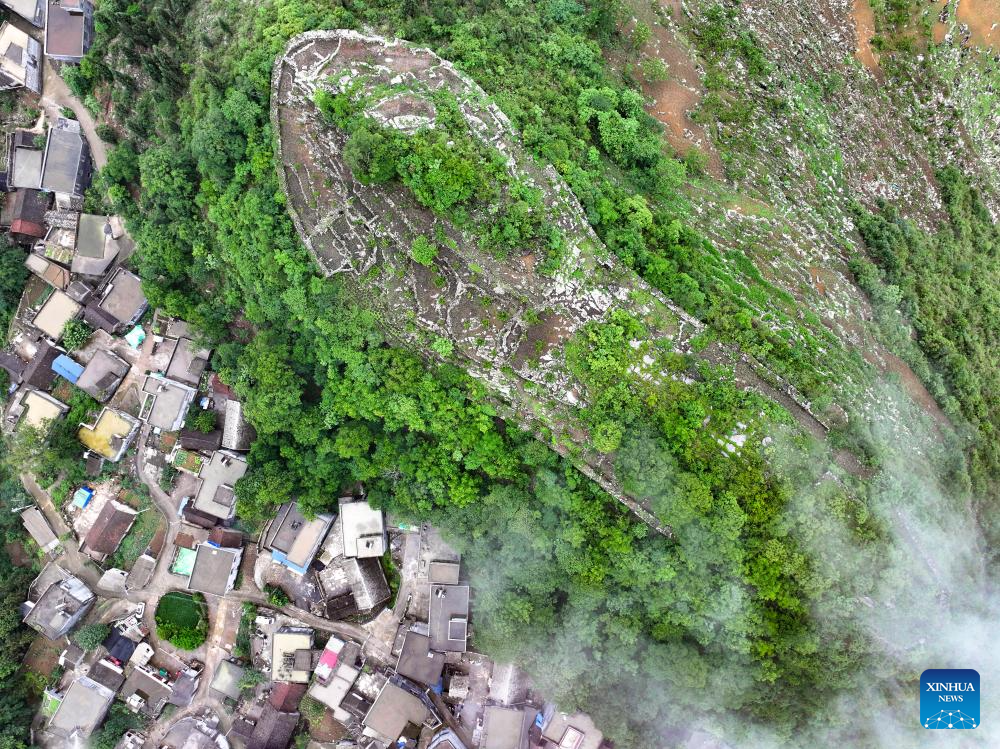
An aerial drone photo taken on May 17, 2024 shows a view of an ancient city ruins dating back to the Ming Dynasty (1368-1644) at Pingzhai Village of Bouyei-Miao Autonomous Prefecture of Qianxinan, southwest China's Guizhou Province. The site appears oval-shaped when viewed from above, covering an area of about 18,000 square meters, with more than 900 meters of stone walls remained. (Xinhua/Liu Xu)
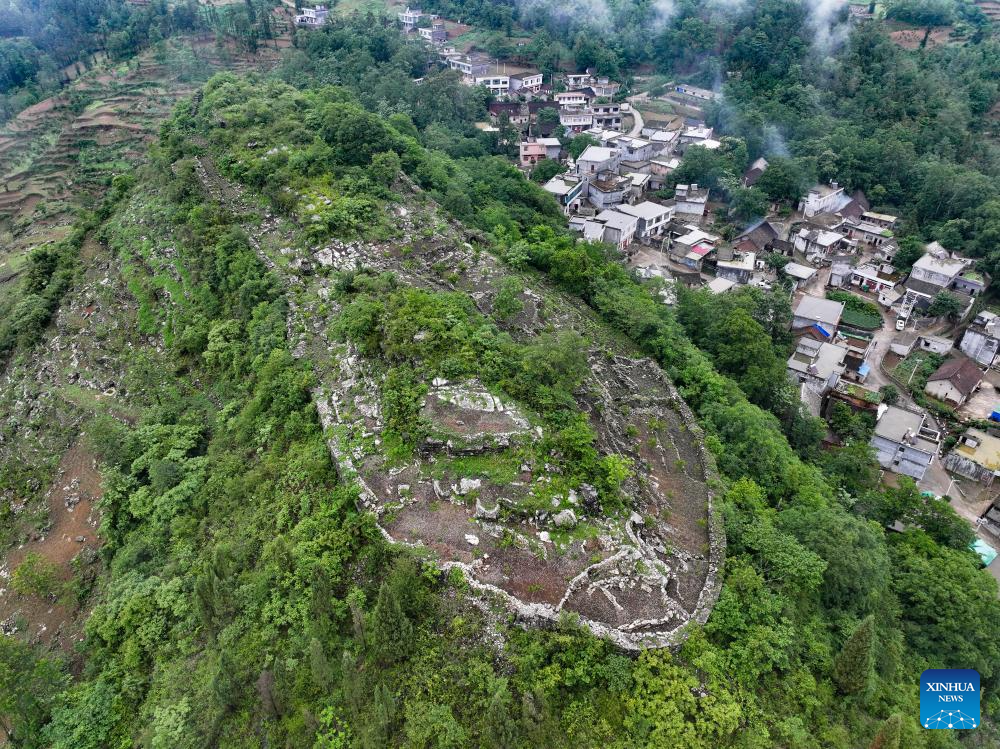
An aerial drone photo taken on May 17, 2024 shows a view of an ancient city ruins dating back to the Ming Dynasty (1368-1644) at Pingzhai Village of Bouyei-Miao Autonomous Prefecture of Qianxinan, southwest China's Guizhou Province. The site appears oval-shaped when viewed from above, covering an area of about 18,000 square meters, with more than 900 meters of stone walls remained. (Xinhua/Liu Xu)
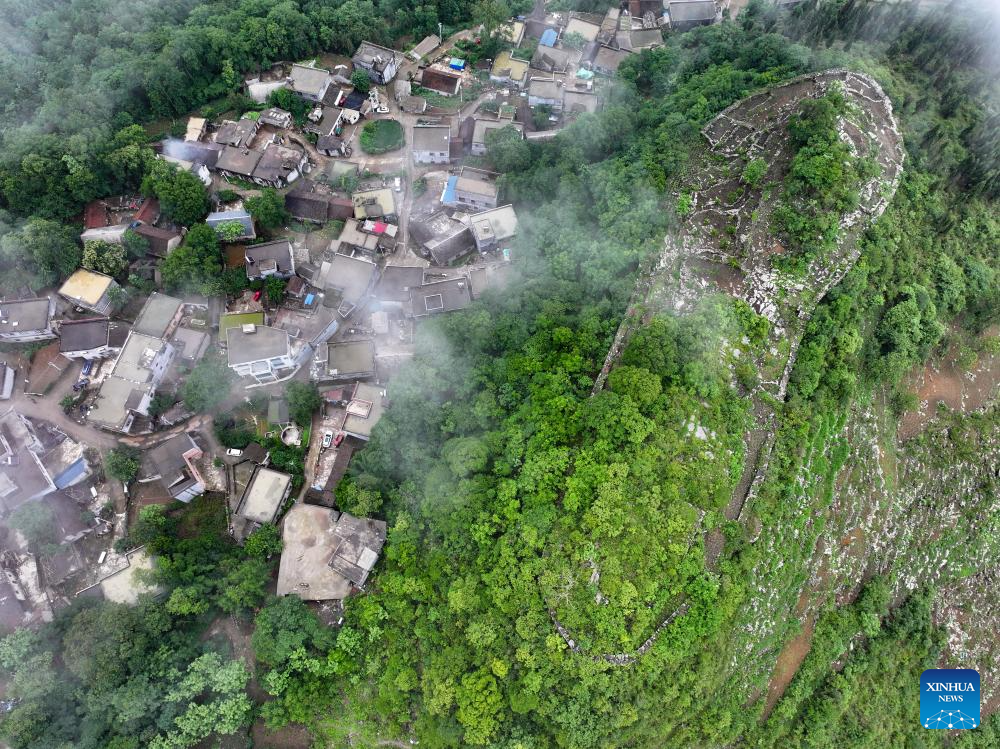
An aerial drone photo taken on May 17, 2024 shows a view of an ancient city ruins dating back to the Ming Dynasty (1368-1644) at Pingzhai Village of Bouyei-Miao Autonomous Prefecture of Qianxinan, southwest China's Guizhou Province. The site appears oval-shaped when viewed from above, covering an area of about 18,000 square meters, with more than 900 meters of stone walls remained. (Xinhua/Liu Xu)
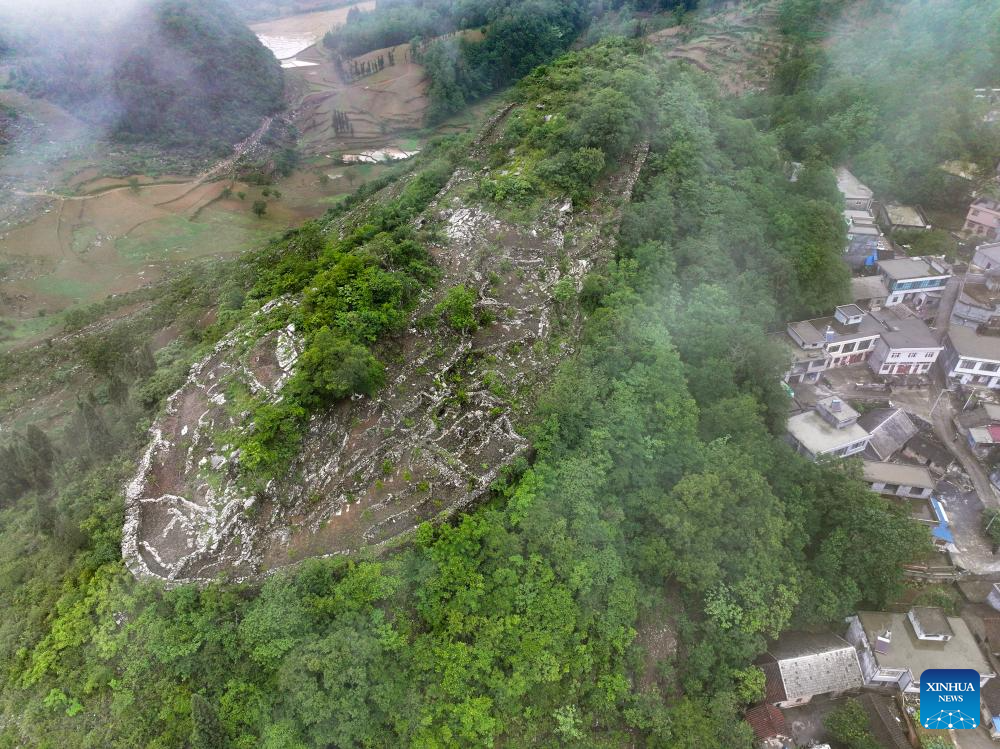
An aerial drone photo taken on May 17, 2024 shows a view of an ancient city ruins dating back to the Ming Dynasty (1368-1644) at Pingzhai Village of Bouyei-Miao Autonomous Prefecture of Qianxinan, southwest China's Guizhou Province. The site appears oval-shaped when viewed from above, covering an area of about 18,000 square meters, with more than 900 meters of stone walls remained. (Xinhua/Liu Xu)
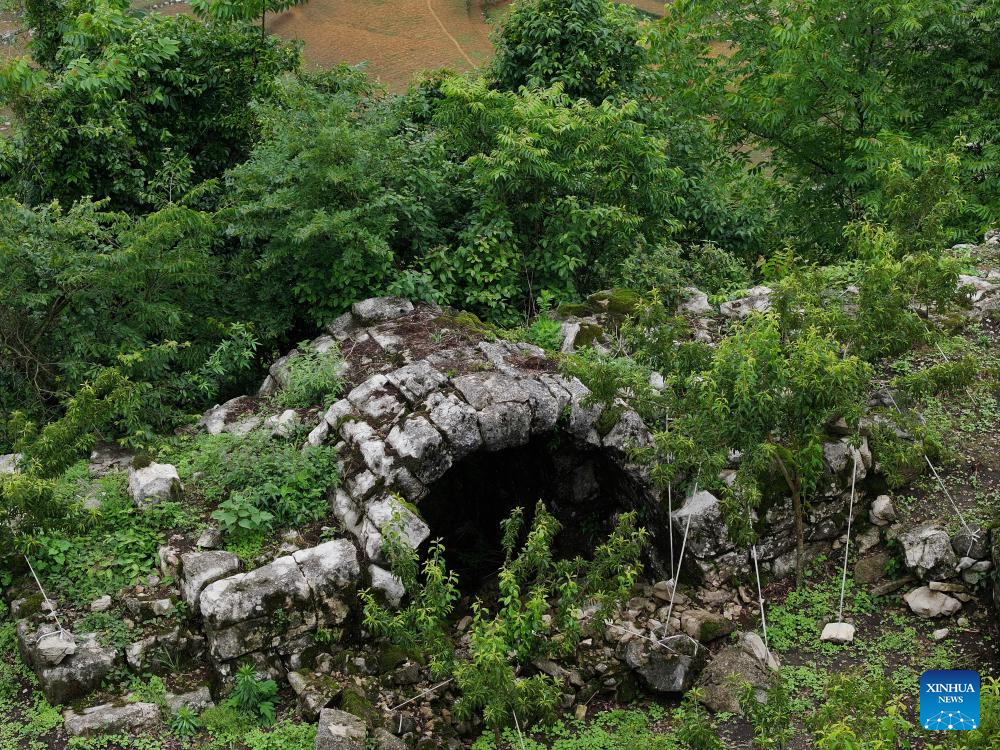
An aerial drone photo taken on May 17, 2024 shows a view of an ancient city ruins dating back to the Ming Dynasty (1368-1644) at Pingzhai Village of Bouyei-Miao Autonomous Prefecture of Qianxinan, southwest China's Guizhou Province. The site appears oval-shaped when viewed from above, covering an area of about 18,000 square meters, with more than 900 meters of stone walls remained. (Xinhua/Liu Xu)
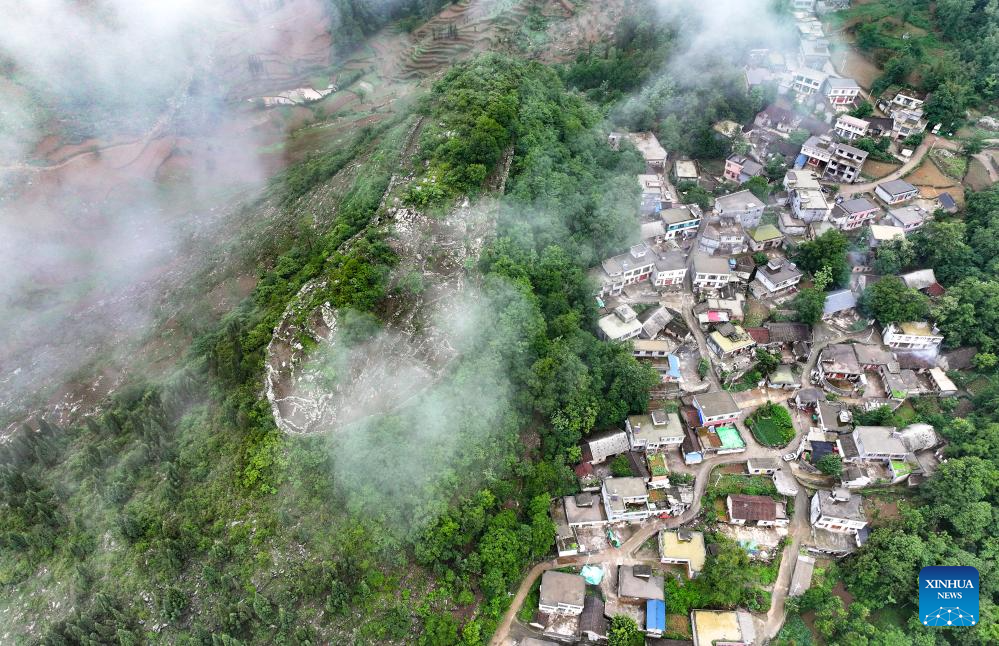
An aerial drone photo taken on May 17, 2024 shows a view of an ancient city ruins dating back to the Ming Dynasty (1368-1644) at Pingzhai Village of Bouyei-Miao Autonomous Prefecture of Qianxinan, southwest China's Guizhou Province. The site appears oval-shaped when viewed from above, covering an area of about 18,000 square meters, with more than 900 meters of stone walls remained. (Xinhua/Liu Xu)
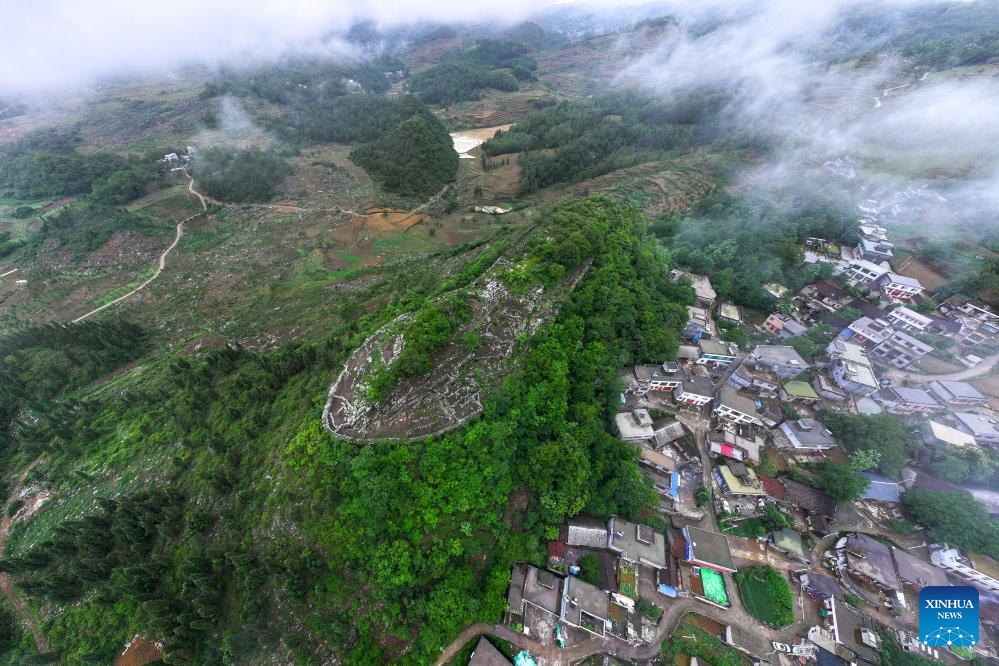
An aerial drone photo taken on May 17, 2024 shows a view of an ancient city ruins dating back to the Ming Dynasty (1368-1644) at Pingzhai Village of Bouyei-Miao Autonomous Prefecture of Qianxinan, southwest China's Guizhou Province. The site appears oval-shaped when viewed from above, covering an area of about 18,000 square meters, with more than 900 meters of stone walls remained. (Xinhua/Liu Xu)

An aerial panoramic drone photo taken on May 17, 2024 shows a view of an ancient city ruins dating back to the Ming Dynasty (1368-1644) at Pingzhai Village of Bouyei-Miao Autonomous Prefecture of Qianxinan, southwest China's Guizhou Province. The site appears oval-shaped when viewed from above, covering an area of about 18,000 square meters, with more than 900 meters of stone walls remained. (Xinhua/Liu Xu)



